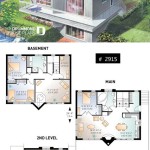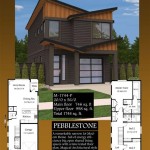A house plan is a detailed blueprint that outlines the design and structure of a building. It provides a comprehensive visual representation of the home, including the layout of rooms, dimensions, electrical and plumbing systems, and exterior features. These plans are essential for obtaining building permits, guiding construction, and ensuring the safe and efficient operation of the home.
There are several ways to obtain house plans. One option is to work with an architect or design professional who can create custom plans tailored to your specific needs and preferences. Alternatively, you can purchase pre-designed plans from online plan services or home improvement stores. These plans are more affordable and readily available, but they may not offer the same level of customization as architect-designed plans.
Here are ten important points to consider when getting plans for your house:
- Define your needs.
- Set a budget.
- Research different options.
- Interview architects/designers.
- Review house plans carefully.
- Make changes as needed.
- Get permits.
- Hire a contractor.
- Supervise construction.
- Enjoy your new home!
By following these steps, you can ensure that you get the perfect house plans for your needs and budget.
Define your needs.
The first step in getting plans for your house is to define your needs. This includes considering the following factors:
- Number of bedrooms and bathrooms. How many people will be living in the house? How many bedrooms and bathrooms do you need to accommodate everyone comfortably?
- Square footage. How much space do you need? Consider your current and future needs. Do you need a large living room for entertaining guests? A spacious kitchen for cooking and baking? A home office? A dedicated playroom for the kids?
- Layout. How do you want the house to flow? Do you prefer an open floor plan with the kitchen, dining room, and living room all connected? Or do you want more separate spaces? Do you need a mudroom to keep shoes and coats organized? A laundry room on the main floor? A master suite with a walk-in closet and private bathroom?
- Style. What style of house do you want? Traditional, modern, farmhouse, craftsman? Consider your personal preferences and the architectural style of your neighborhood.
Once you have a good understanding of your needs, you can start to narrow down your options and find a house plan that is the perfect fit for you and your family.
Set a budget.
Once you have defined your needs, the next step is to set a budget for your house plans. This will help you narrow down your options and find a plan that is affordable for you.
There are a few factors to consider when setting your budget:
- Cost of the house plan. This will vary depending on the size, complexity, and style of the plan. Custom plans from an architect will typically cost more than pre-designed plans from an online plan service or home improvement store.
- Cost of construction. This will depend on the size, materials, and finishes of your home. It is important to get bids from multiple contractors before starting construction to ensure that you are getting the best possible price.
- Other costs. These may include the cost of permits, inspections, and landscaping. It is important to factor these costs into your budget so that you do not end up overspending.
Once you have considered all of these factors, you can set a realistic budget for your house plans. It is important to stick to your budget so that you do not end up in debt.
Here are some tips for saving money on your house plans:
- Consider a pre-designed plan. Pre-designed plans are more affordable than custom plans, and they can be just as beautiful and functional.
- Shop around. Compare prices from different architects, designers, and plan services before making a decision.
- Negotiate. Once you have found a plan that you like, be sure to negotiate the price with the architect or designer.
By following these tips, you can save money on your house plans and get the perfect home for your needs and budget.
Research different options.
Once you have defined your needs and set a budget, the next step is to research different options for getting house plans. There are a few different ways to do this:
- Online plan services. There are a number of online plan services that offer a wide variety of house plans to choose from. These plans are typically more affordable than custom plans from an architect, and they can be just as beautiful and functional.
- Home improvement stores. Many home improvement stores also sell house plans. These plans are typically more limited in variety than what you will find online, but they can be a good option if you are looking for a simple and affordable plan.
- Architects and designers. If you have specific needs or preferences, you may want to work with an architect or designer to create a custom house plan. This will typically be the most expensive option, but it will also give you the most control over the design of your home.
- Magazines and books. There are a number of magazines and books that feature house plans. This can be a good way to get ideas for your own home, but it is important to keep in mind that these plans may not be suitable for your specific needs and budget.
Once you have researched different options, you can start to narrow down your choices and find a house plan that is the perfect fit for you and your family.
Interview architects/designers.
If you are considering working with an architect or designer to create a custom house plan, it is important to interview several different professionals before making a decision. This will help you find the right person for your project and ensure that you are getting the best possible value for your money.
Here are a few things to keep in mind when interviewing architects/designers:
- Experience. How many years of experience does the architect/designer have? What types of projects have they worked on? Be sure to look at their portfolio to get a sense of their style and expertise.
- Credentials. Is the architect/designer licensed and insured? Are they a member of any professional organizations? This will give you peace of mind knowing that they are qualified to do the job.
- Communication. How well do you communicate with the architect/designer? Do they listen to your needs and understand your vision for your home? It is important to find someone who you can work with easily and who is responsive to your feedback.
- Fees. How much does the architect/designer charge for their services? Be sure to get a clear understanding of their fees before hiring them. You should also ask about any additional costs that may be associated with your project, such as the cost of permits and inspections.
Once you have interviewed several architects/designers, you can start to narrow down your choices and find the right person for your project. It is important to choose someone who you trust and who you believe can help you create the home of your dreams.
Review house plans carefully.
Once you have found a few house plans that you like, it is important to review them carefully before making a decision. This will help you ensure that the plans are complete and accurate, and that they meet your specific needs and requirements.
Here are a few things to look for when reviewing house plans:
- Overall layout. Make sure that the overall layout of the house is what you want. Consider the flow of traffic, the placement of rooms, and the size and shape of each room.
- Room dimensions. Check the dimensions of each room to make sure that they are large enough for your needs. Pay attention to the ceiling height, as well.
- Windows and doors. Make sure that the windows and doors are placed where you want them. Consider the amount of natural light that you want in each room, and the views that you want to have from each window.
- Electrical and plumbing. Check the electrical and plumbing plans to make sure that they are complete and accurate. Make sure that there are enough outlets and switches in each room, and that the plumbing fixtures are placed where you want them.
- Structural integrity. Make sure that the house plans are structurally sound. This means that the foundation, walls, and roof are designed to support the weight of the house and withstand the forces of nature.
If you have any questions about the house plans, be sure to ask the architect or designer for clarification. It is important to make sure that you are completely satisfied with the plans before you start construction.
Make changes as needed.
Once you have reviewed the house plans carefully, you may find that there are some changes that you want to make. This is perfectly normal, and it is important to make sure that the plans are perfect for you and your family before you start construction.
There are a few different ways to make changes to house plans. You can work with the architect or designer to make the changes, or you can make the changes yourself if you have the necessary skills and knowledge. If you are making changes to the plans yourself, it is important to make sure that the changes are structurally sound and that they meet all building codes and regulations.
Here are a few tips for making changes to house plans:
- Start by making a list of the changes that you want to make. This will help you to stay organized and to make sure that you do not forget any important changes.
- Prioritize your changes. Decide which changes are most important to you and which changes can be made later or eliminated altogether.
- Discuss your changes with the architect or designer. If you are working with an architect or designer, they can help you to make sure that your changes are feasible and that they meet all building codes and regulations.
- Get the changes in writing. Once you have finalized the changes, be sure to get them in writing from the architect or designer. This will help to avoid any misunderstandings later on.
Making changes to house plans can be a daunting task, but it is important to remember that it is your home and you should make it perfect for you and your family. By following these tips, you can make changes to your house plans with confidence and ensure that your dream home becomes a reality.
Get permits.
Once you have finalized your house plans, the next step is to get permits from the local building department. This is a legal requirement in most areas, and it ensures that your home is built to code and is safe to live in.
The permit process can vary from one jurisdiction to another, but there are some general steps that you can follow:
- Submit your plans to the building department. You will need to submit a complete set of plans, including architectural, structural, mechanical, and electrical plans. The building department will review your plans to make sure that they meet all building codes and regulations.
- Pay the permit fees. The permit fees will vary depending on the size and complexity of your project. The building department will provide you with a list of the fees that you need to pay.
- Wait for the permit to be approved. The building department will typically take a few weeks to review your plans and approve the permit. Once the permit is approved, you will be able to start construction.
It is important to note that you cannot start construction on your home until you have obtained a building permit. If you do, you may be fined or even forced to stop construction. It is also important to make sure that your contractor is licensed and insured. This will protect you in the event of any accidents or injuries that occur during construction.
Getting permits can be a time-consuming and frustrating process, but it is an important step in ensuring that your home is built to code and is safe to live in. By following these steps, you can get the permits you need to start construction on your dream home.
Hire a contractor.
Once you have obtained a building permit, the next step is to hire a contractor to build your home. This is a big decision, and it is important to choose a contractor who is qualified, experienced, and trustworthy.
Here are a few things to keep in mind when hiring a contractor:
- Get referrals. Ask your friends, family, and neighbors for recommendations. You can also check online reviews to see what other people have said about different contractors.
- Interview several contractors. Once you have a few referrals, interview each contractor to learn more about their experience, qualifications, and rates. Be sure to ask for references from previous clients.
- Check references. Contact the references provided by each contractor to get their feedback on the contractor’s work. This will help you to verify the contractor’s experience and workmanship.
- Get a written contract. Once you have chosen a contractor, be sure to get a written contract that outlines the scope of work, the payment schedule, and the completion date.
Hiring a contractor is a big decision, but it is an important step in ensuring that your home is built to code and is safe to live in. By following these tips, you can hire a contractor who will help you build the home of your dreams.
Here are some additional tips for working with a contractor:
- Communicate regularly. Keep in close communication with your contractor throughout the construction process. This will help to ensure that the project is on track and that you are happy with the progress.
- Be flexible. There may be times when the construction process does not go exactly as planned. Be flexible and willing to make changes as needed.
- Trust your contractor. You have hired your contractor to build your home, so it is important to trust their expertise. If you have any concerns, be sure to discuss them with your contractor.
By following these tips, you can build a strong relationship with your contractor and ensure that your home is built to your satisfaction.
Supervise construction.
Once you have hired a contractor, the next step is to supervise the construction of your home. This is an important step to ensure that your home is built to your specifications and that the construction process is running smoothly.
- Monitor the progress of construction. Regularly visit the construction site to monitor the progress of construction and to make sure that the work is being done according to the plans and specifications.
- Inspect the materials and workmanship. Inspect the materials and workmanship of the construction to ensure that they meet the standards that you have agreed upon with your contractor.
- Attend construction meetings. Attend construction meetings with your contractor and other members of the construction team to discuss the progress of construction and to resolve any issues that may arise.
- Review change orders. Review any change orders that your contractor submits to you. Change orders are requests from the contractor to make changes to the plans or specifications. Make sure that you understand the changes and that you agree to them before approving the change order.
Supervising the construction of your home is an important responsibility. By following these tips, you can ensure that your home is built to your satisfaction and that the construction process runs smoothly.
Enjoy your new home!
Once the construction of your home is complete, it is time to enjoy your new home! This is a time to relax and appreciate all of the hard work that you have put into your home. It is also a time to start making new memories in your new home.
Here are a few tips for enjoying your new home:
- Take some time to relax and enjoy your new home. This is a time to de-stress and to appreciate all of the hard work that you have put into your home. Spend some time exploring your new home and getting to know all of its features.
- Invite your friends and family over to celebrate your new home. This is a great way to share your joy with the people who are closest to you. Host a party or a gathering and show off your new home.
- Start making new memories in your new home. This is a time to create new traditions and to make lasting memories in your new home. Host family dinners, have movie nights, and celebrate holidays in your new home.
- Make your new home your own. Decorate your home to your taste and style. Add personal touches that make your home feel unique and special.
Enjoying your new home is all about making it your own and creating lasting memories. By following these tips, you can make your new home a place where you can relax, entertain, and create lasting memories.
Congratulations on your new home! We hope that you enjoy it for many years to come.









Related Posts








